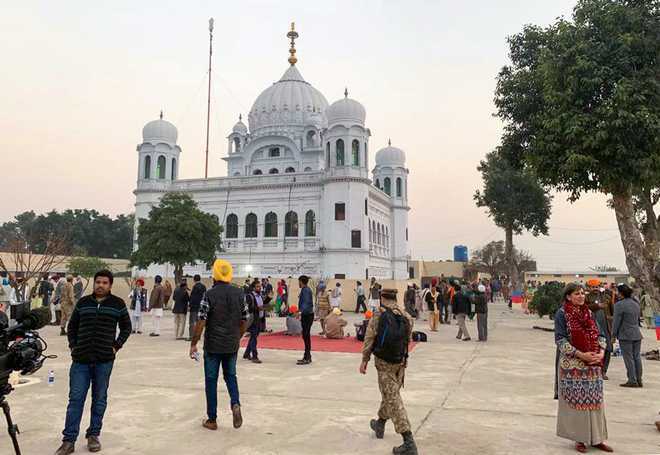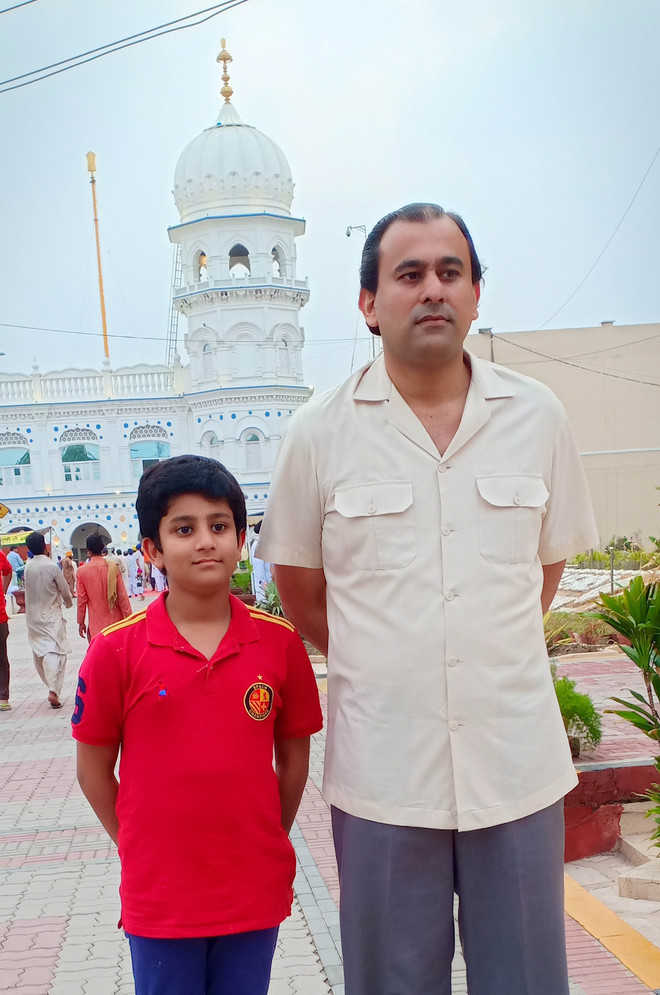
The Kartarpur Gurdwara in Pakistan. File photo
Tribune News Service
Chandigarh, August 7
Punjab Chief Minister Capt Amarinder Singh on Wednesday expressed concern over Pakistan’s decision to downgrade diplomatic ties with India but hoped the move would not adversely impact the construction of the Kartarpur Corridor.
Reacting to reports of Pakistan’s decision to expel the Indian High Commissioner in Islamabad and to review ‘bilateral agreements’ with New Delhi, the chief minister described Islamabad’s reaction as knee-jerk and uncalled for.
Kashmir was an internal matter of India, which was in its rights to take any decision with regard to the region, he said, adding that Islamabad should not have used this as an excuse to undermine its diplomatic relations with India.
Pakistan’s decision was not in the interest of regional security, he said, warning that any such move to destabilise the fragile peace of the South-East Asian region would make the neighbouring country itself vulnerable.
At the same time, Capt Amarinder hoped these developments would not affect the Kartarpur Corridor and Pakistan would not hurt Sikh sentiments by putting the much-awaited corridor on hold.
The decision to build the corridor to mark the historic occasion of the 550th birth anniversary of Sri Guru Nanak Dev ji had been welcomed by Sikhs all over the world and any move now to scuttle the project would leave millions of devotees disappointed.
Political considerations should not be allowed to overshadow the religious feelings of the Sikhs, for whom Kartapur Gurdwara stands out as a symbol of reverence, said the chief minister.
Capt Amarinder urged the Indian government also to take up the matter with Islamabad on priority and ensure that the development of the Kartarpur Corridor remains on track, notwithstanding the diplomatic and other developments between the two nations in the wake of the revocation of Article 370 in Kashmir.
Both countries could take adequate steps to ensure that the corridor’s progress and security is not jeopardised in the light of Pakistan’s decision to scale down diplomatic relations and suspend trade ties with India, said the chief minister.
Kartarpur had nothing to do with Kashmir or any other issue of concern for the two countries, he said, adding that the 550th Prakash Purb was a momentous event with enormous importance for the people of India, especially the Sikhs.
Pak move on ties shouldn’t affect corridor: CM
Tribune news service
Chandigarh, August 7
Chief Minister Captain Amarinder Singh has expressed concern over Pakistan’s decision to downgrade diplomatic ties with India, but hoped the move would not adversely impact the construction of Kartarpur corridor.
Reacting to reports of Pakistan’s decision to expel the Indian High Commissioner in Islamabad and to review bilateral agreements with New Delhi, the Chief Minister described Islamabad’s reaction as “knee-jerk and uncalled for”. Kashmir was an internal matter for India, which was in its rights to take any decision with regard to the region, he said, adding that Islamabad should not have used this as an excuse to undermine its diplomatic relations with India.
Pakistan’s decision was not in the interest of regional security, he said, warning that any such move to destabilise the fragile peace of the South-East Asian region would make the neighbouring country itself vulnerable.
At the same time, Captain Amarinder hoped these developments would not affect the corridor and Pakistan would not hurt Sikh sentiments by putting the much-awaited project on hold. The decision to build the corridor to mark the historic occasion of the 550th birth anniversary of Guru Nanak Dev had been welcomed by Sikhs all over the world and any move now to scuttle the project would leave millions of devotees disappointed.
Political considerations should not be allowed to overshadow the religious feelings of the Sikhs, for whom Kartapur Gurdwara stands out as a symbol of reverence, said the CM.











































































